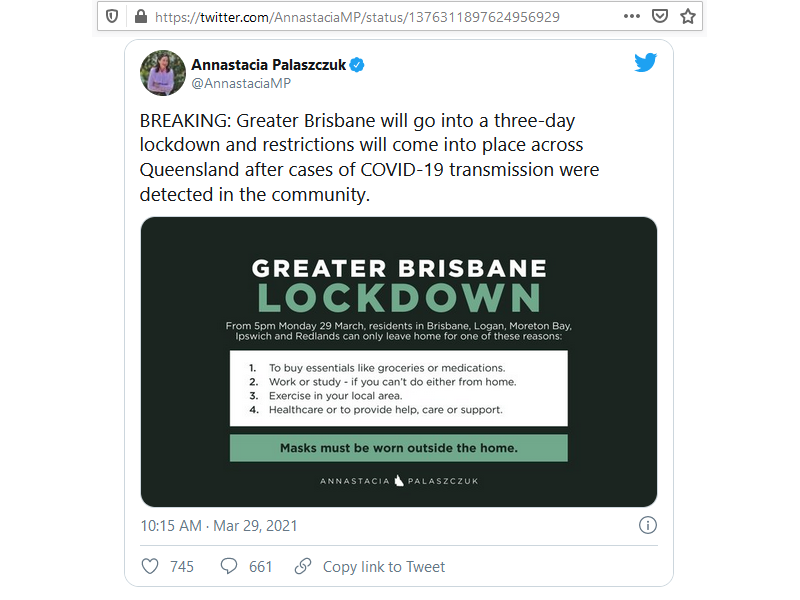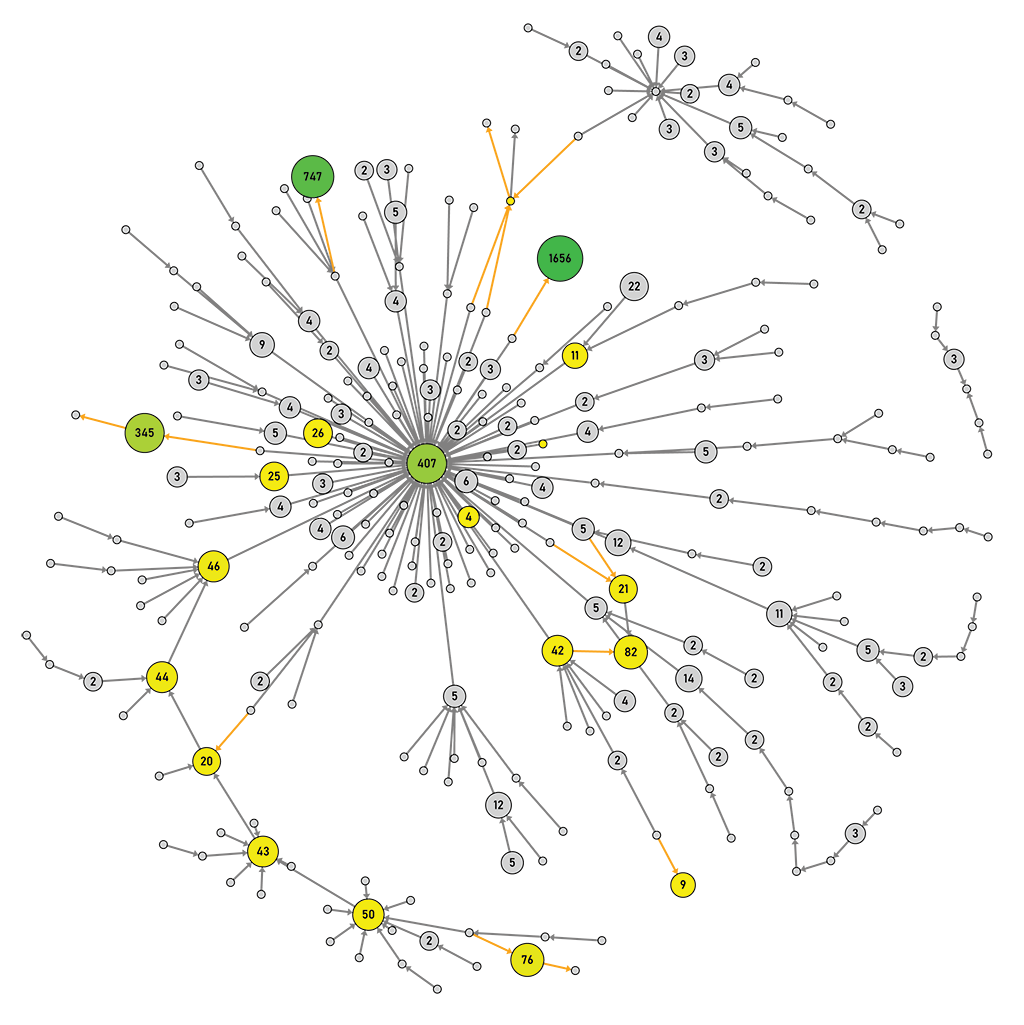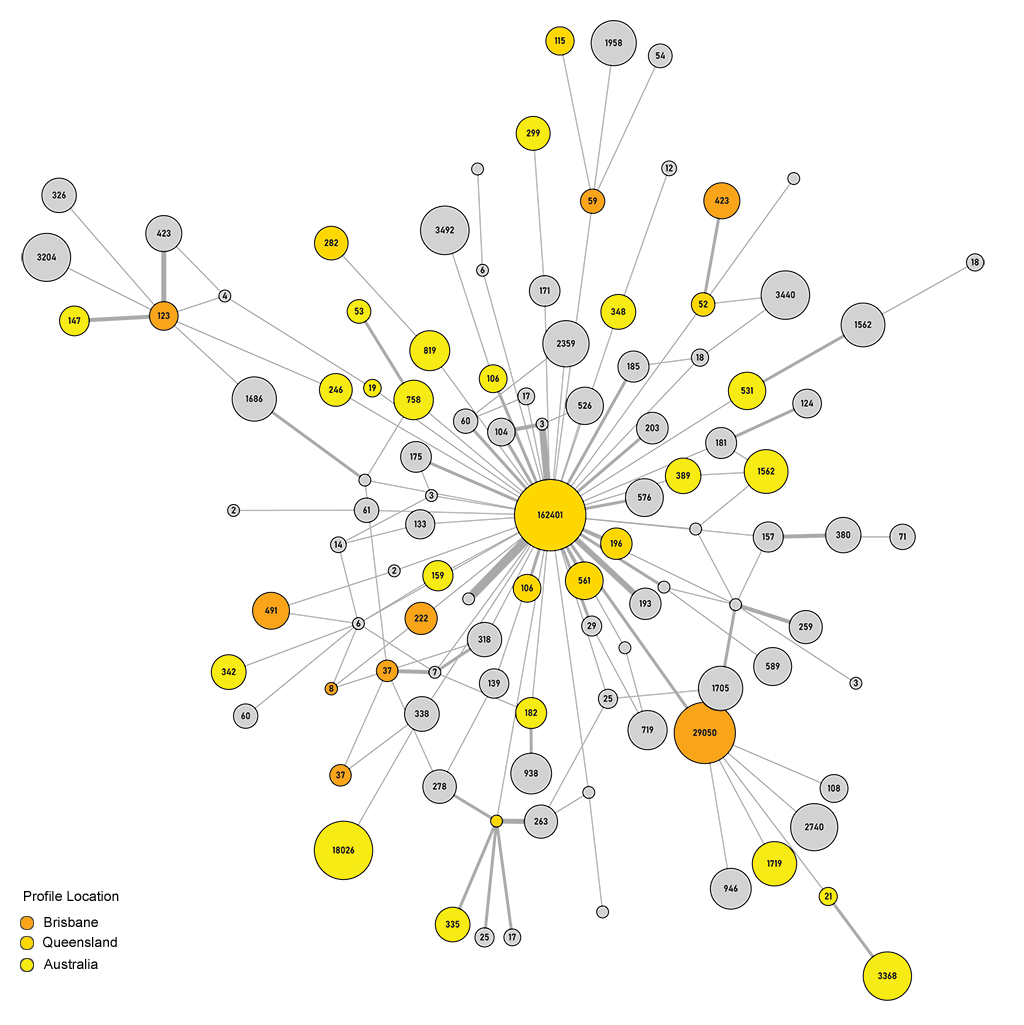 The VOSON Lab has recently published to GitHub a new
open source R package called
The VOSON Lab has recently published to GitHub a new
open source R package called voson.tcn.
The package uses the Early-Access Twitter API v2, to collect tweets
belonging to specified threaded conversations and generate networks. The
Twitter API v2 provides a new tweet identifier: the conversation
ID, that is common to all tweets that are part of a conversation,
and can be searched for using the API search endpoints. Identifiers and
associated metadata for referenced tweets can also be collected in the
same search for conversation tweets, allowing us to construct twitter
networks with tweet and user metadata whilst minimising API
requests.
Twitter Developer Access
The voson.tcn package requires developer app
authentication keys or tokens to access the Twitter API v2. These can be
either the Access token & secret of an app or its
Bearer token.
To obtain these credentials and use the early-access API you will need to have or apply for a Twitter Developer Account, as well as have activated the new Developer Portal. Once approved you will then need to create a development project, which is the new management container for apps, and either create a new app or associate one of your existing apps with it.
There are currently two project types available that correspond to Twitter’s developer product tracks, a standard and academic type. Academic projects are only available to researchers who have completed and have had their application for the academic research track approved for non-commercial research purposes. Standard projects are for more general use, including hobby and educational purposes. The project type features differ in their API access and caps; standard projects can only access the 7-day recent search endpoint whereas an academic project can access the full-archive search endpoint for historical tweets. There are also rate-limits and monthly tweet caps for API v2 search endpoints. At the time of writing, the caps are 500k and 10 million tweets that can be retrieved per month for the standard and academic track projects respectively.
Please note that there are also terms of use and restricted use cases that should be considered before applying for access or using the Twitter API.
Installation
The voson.tcn R package is in development and currently
only available on GitHub. It can be
installed as follows:
# use the remotes package to install the latest dev version of voson.tcn from github
library(remotes)
install_github("vosonlab/voson.tcn")
# Downloading GitHub repo vosonlab/voson.tcn@HEAD
# √ checking for file
# - preparing 'voson.tcn':
# √ checking DESCRIPTION meta-information ...
# - checking for LF line-endings in source and make files and shell scripts
# - checking for empty or unneeded directories
# - building 'voson.tcn_0.1.6.9000.tar.gz'
#
# * installing *source* package 'voson.tcn' ...
# ...
# * DONE (voson.tcn)
# Making 'packages.html' ... done
Authentication
The voson.tcn package only supports app based
authentication using OAuth2.0 tokens which are also known
as bearer
tokens. We will likely support user based tokens in the future,
however at this stage they do not offer any advantages as they have
lower rate-limits and we are not using any private metadata of which
they permit access (such as user-visible only metrics).
The token can be created using either your apps
access token & secret (also known as consumer keys) or
its bearer token. It is recommended that this token is
saved for future use; there is no need to perform this step more than
once as the token will not change unless it is invalidated or you
regenerate keys on the developer portal.
library(voson.tcn)
# retrieves a bearer token from the API using the apps consumer keys
token <- tcn_token(consumer_key = "xxxxxxxx",
consumer_secret = "xxxxxxxx")
# alternatively if you have a bearer token already you can assign it directly
token <- list(bearer = "xxxxxxxxxxxx")
# if you save the token to file this step only needs to be done once
saveRDS(token, "~/.tcn_token")
Collection
Collecting conversation tweets requires the tweet ID or URL of a
tweet that belongs to each threaded conversation that you are interested
in. These are passed to the voson.tcn collect function
tcn_threads as a vector or list. Conversation IDs will be
tracked by this function to avoid duplication and, if tweet IDs are
found to belong to a conversation that has already been collected on,
then that conversation will be skipped.
In the following example, we are collecting the tweets for a threaded conversation belonging to a public lockdown announcement following a COVID-19 outbreak in Brisbane, Queensland, Australia, that took place on March, 29, 2021. The tweet URL or ID (number following the status in the URL) can be passed directly to the collection function.

# read token from file
token <- readRDS("~/.tcn_token")
# collect the conversation thread tweets for supplied ids
tweets <- tcn_threads("https://twitter.com/AnnastaciaMP/status/1376311897624956929", token)
When completed, a list of named dataframes will be returned, with
tweets containing all of the tweets and their metadata, and
users containing all of the referenced users in the tweets
and their metadata. In our example, 286 tweets were collected with 180
associated users public metadata.
Note that the collection of a threaded tweet conversation is a snapshot of the state of the conversation at a point in time. Metrics and networks produced from our data will not completely match subsequent collections of the same conversation, as it will have likely cumulatively expanded over time.
# collected tweets
print(tweets$tweets, n = 3)
# # A tibble: 286 x 14
# in_reply_to_user~ conversation_id source author_id tweet_id ref_tweet_type
# <chr> <chr> <chr> <chr> <chr> <chr>
# 1 15999~ 137631189762495~ Twitte~ 134852208~ 13763373~ replied_to
# 2 1142316897985163~ 137631189762495~ Twitte~ 126908387~ 13763373~ replied_to
# 3 25683~ 137631189762495~ Twitte~ 137503906~ 13763371~ replied_to
# # ... with 283 more rows, and 8 more variables: ref_tweet_id <chr>, text <chr>,
# # created_at <chr>, includes <chr>, public_metrics.retweet_count <int>,
# # public_metrics.reply_count <int>, public_metrics.like_count <int>,
# # public_metrics.quote_count <int>
# users metadata
print(tweets$users, n = 3)
# # A tibble: 180 x 12
# profile.username profile.created_~ profile.profile_~ user_id profile.descript~
# <chr> <chr> <chr> <chr> <chr>
# 1 MSMW~ 2013-03-30T06:48~ https://pbs.twim~ 131592~ "Fact checking i~
# 2 bpro~ 2012-12-04T02:07~ https://pbs.twim~ 987844~ "Only way to get~
# 3 scre~ 2009-10-22T22:56~ https://pbs.twim~ 844463~ "I'm a creative~
# # ... with 177 more rows, and 7 more variables: profile.name <chr>,
# # profile.verified <lgl>, profile.location <chr>,
# # profile.public_metrics.followers_count <int>,
# # profile.public_metrics.following_count <int>,
# # profile.public_metrics.tweet_count <int>,
# # profile.public_metrics.listed_count <int>
If interested in text analysis, the tweet text can be found in the
text column of the tweets dataframe and user
profile descriptions in profile.description of the
users dataframe.
Public metrics for tweets and users are
found in dataframe columns prefixed, with public_metrics
and profile.public_metrics respectively.
library(dplyr)
names(select(tweets$tweets, starts_with("public_metrics")))
# [1] "public_metrics.retweet_count" "public_metrics.reply_count"
# [3] "public_metrics.like_count" "public_metrics.quote_count"
names(select(tweets$users, starts_with("profile.public_metrics")))
# [1] "profile.public_metrics.followers_count"
# [2] "profile.public_metrics.following_count"
# [3] "profile.public_metrics.tweet_count"
# [4] "profile.public_metrics.listed_count"
Network Creation
There are two types of networks that can be generated using
voson.tcn: activity and actor
network. These differ by the type of node and resulting structure of the
networks.
Activity Network
An activity network is a representation of the
conversation as seen on Twitter: nodes are tweets and the edges are how
they are related. Tweets (or nodes) are identified by their unique
identifier Tweet ID (formerly Status ID). In a
Twitter threaded conversation, there are only two types of connections
or edges between tweets and these are replied_to and
quoted.
Replies are made when a user chooses the reply option and
publishes a tweet response to the tweet they are replying to. Quotes are
a little different in that the user has included a link to or
quoted another tweet in the body of their tweet. In Twitter
conversation networks, it is common to quote a tweet as part of
a reply tweet, generating in the activity network a
replied_to and quoted edge from the same
node.
# generate an activity network
activity_net <- tcn_network(tweets, "activity")
# number of nodes
nrow(activity_net$nodes)
# [1] 279
# number of edges
print(activity_net$edges, n = 3)
# # A tibble: 281 x 3
# from to type
# <chr> <chr> <chr>
# 1 1376337359126495232 1376328523518898176 replied_to
# 2 1376337350163267584 1376325216658317315 replied_to
# 3 1376337128016113665 1376311897624956929 replied_to
# # ... with 278 more rows
unique(activity_net$edges$type)
# [1] "replied_to" "quoted"
Actor Network
An actor network represents the interactions between
Twitter users in the conversation: nodes are the users and edges are
their connections. As in the activity network, edges are
either a reply or a quote but edges represent
the classification of a tweet connecting users rather than the activity.
Users (or nodes) are identified by their unique Twitter
User ID. In the actor network, interactions
between users are more apparent and can be measured by the frequency
(and direction) of edges between them.
# generate an actor network
actor_net <- tcn_network(tweets, "actor")
# number of nodes or actors
nrow(actor_net$nodes)
# [1] 180
print(actor_net$edges, n = 3)
# # A tibble: 286 x 6
# from to type tweet_id created_at text
# <chr> <chr> <chr> <chr> <chr> <chr>
# 1 13485220~ 15999128~ reply 13763373591~ 2021-03-29T0~ "@Ther~ @Scott~
# 2 12690838~ 11423168~ reply 13763373501~ 2021-03-29T0~ "@Luke~ @Annas~
# 3 13750390~ 25683344~ reply 13763371280~ 2021-03-29T0~ "@AnnastaciaMP You do un~
# # ... with 283 more rows
unique(actor_net$edges$type)
# [1] "reply" "quote" "tweet"
Note that in the actor network there is an additional
edge type: tweet, which is assigned to a self-loop edge
created for the thread’s initial tweet. This is a technique used to
retain the initial tweet’s metadata as edge attributes comparable to
other edges in the network.
The initial conversation tweet would not usually be included in the edge list, as the initial conversation tweet is not directed at another user, and hence no edge to attach metadata.For example, this allows the text of the initial tweet to be included in any actor network tweet text analysis. It would not usually be included in the edge list as the initial conversation tweet is not directed at another user, and hence no edge to attach metadata is naturally found in this type of network.
Plot Graphs
Activity Network
Visualisation of the activity network produced with
igraph.
library(igraph)
library(RColorBrewer)
g <- graph_from_data_frame(activity_net$edges, vertices = activity_net$nodes)
Show code
# change likes to log scale
like_count <- V(g)$public_metrics.like_count
like_count[is.na(like_count)] <- 0
ln_like_count <- log(like_count)
ln_like_count[!is.finite(ln_like_count)] <- 0
# set node size based on likes, min size 4
size <- ln_like_count * 2
V(g)$size <- ifelse(size > 0, size + 8, 4)
# set node label if number of likes >= 2
V(g)$label <- ifelse(like_count >= 2, like_count, NA)
V(g)$label.color <- "black"
# set node colors based on number of retweets low to high is yellow to green
# set tweets with no retweets to grey
rt_count <- V(g)$public_metrics.retweet_count
rt_count[is.na(rt_count)] <- 0
cols <- colorRampPalette(c("yellow1", "green3"))
cols <- cols(max(rt_count) + 1)
V(g)$color <- cols[rt_count + 1]
V(g)$color[which(rt_count < 1)] <- "lightgrey"
# set edge color to orange if tweet quoted another tweet
E(g)$color <- ifelse(E(g)$type == "quoted", "orange", "grey")
# plot the graph using fruchterman reingold layout
set.seed(200)
tkplot(g,
canvas.width = 1024, canvas.height = 1024,
layout = layout_with_fr(g),
edge.arrow.size = 0.5,
edge.width = 2)

voson.tcn collects tweets that are all linked to each
other via the conversation ID. This means that in a network
generated from this data, such as the activity network, all of the nodes
(tweets) should be connected in a single component per
conversation ID. If multiple conversation IDs
were collected on then, it is also possible to have one component
because of quote edges. These edges joining conversations occur
when a tweet in one conversation has quoted a tweet in another that you
have collected.
In the example activity network above, there are two components even
though only one conversation ID was collected on. Multiple
components are usually due to a missing conversation tweet not able to
be retrieved from the API and producing a broken reply chain. This can
often occur if, for example, a tweet has been deleted, or the tweet or
user flagged or suspended in some way restricting public
availability.
Actor Network
Visualisation of the actor network produced with
igraph.
library(dplyr)
library(magrittr)
library(stringr)
regex_ic <- function(x) regex(x, ignore_case = TRUE)
# best effort set the node colour attribute based on presence of city, state,
# or country in the actors profile location field
# value assigned from first match
nodes <- actor_net$nodes %>%
mutate(color = case_when(
str_detect(profile.location, regex_ic("brisbane|bris")) ~ "orange",
str_detect(profile.location, regex_ic("queensland|qld")) ~ "gold",
str_detect(profile.location, regex_ic("australia|oz")) ~ "yellow",
TRUE ~ "lightgrey"))
g2 <- graph_from_data_frame(actor_net$edges, vertices = nodes)
Show code
# the following code de-clutters the actor network by removing some nodes
# that are not part of conversation chains and are stand-alone replies to
# the initial thread tweet
# get the author of the initial thread tweet using the conversation id
conversation_ids <- c("1376311897624956929")
thread_authors <- activity_net$nodes %>%
filter(tweet_id %in% conversation_ids) %>% select(user_id)
# remove actors replying to the initial tweet that have a degree of 1
thread_spokes <- unlist(
incident_edges(g2, V(g2)[which(V(g2)$name %in% thread_authors$user_id)],
"in"))
spokes_tail_nodes <- V(g2)[tail_of(g2, thread_spokes)]$name
g2 <- delete_vertices(g2, degree(g2) == 1 & V(g2)$name %in% spokes_tail_nodes)
# convert the graph to undirected
# simplify the graph and collapse edges into an edge weight value
E(g2)$weight <- 1
g2 <- as.undirected(simplify(g2, edge.attr.comb = list(weight = "sum")))
g2 <- delete_vertices(g2, degree(g2) == 0)
# use edge weight for graph edge width
E(g2)$width <- ifelse(E(g2)$weight > 1, E(g2)$weight + 1, 1)
# use the actors followers count for node size
followers_count <- log(V(g2)$profile.public_metrics.followers_count)
followers_count[!is.finite(followers_count)] <- 0
size <- followers_count * 3
V(g2)$size <- ifelse(size < 6, 6, size)
V(g2)$label <- ifelse(followers_count > 0,
V(g2)$profile.public_metrics.followers_count, NA)
# plot the graph using automatically chosen layout
set.seed(201)
tkplot(g2,
canvas.width = 1024, canvas.height = 1024,
layout = layout_nicely(g2),
vertex.label.cex = 0.8,
vertex.label.color = "black")
